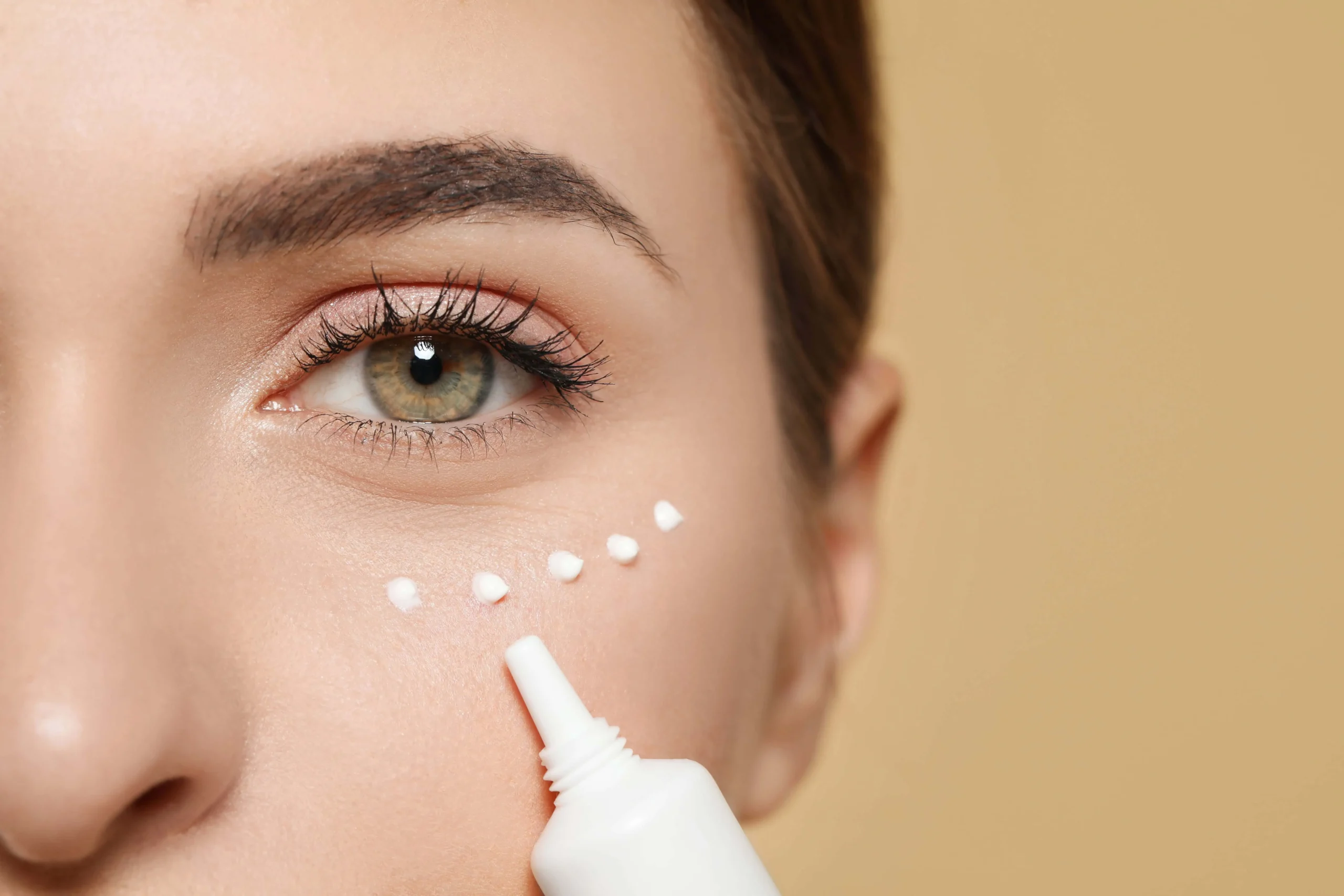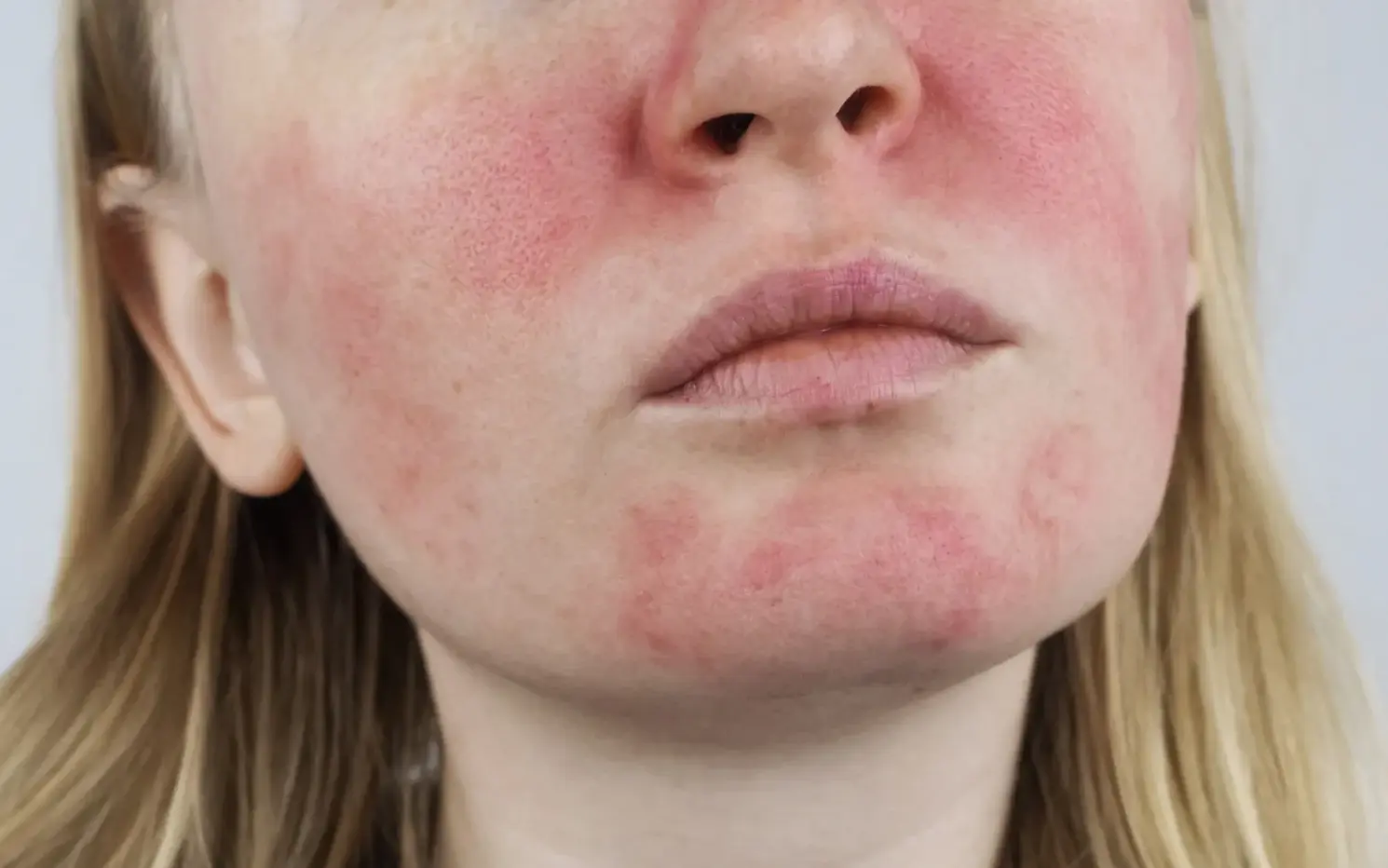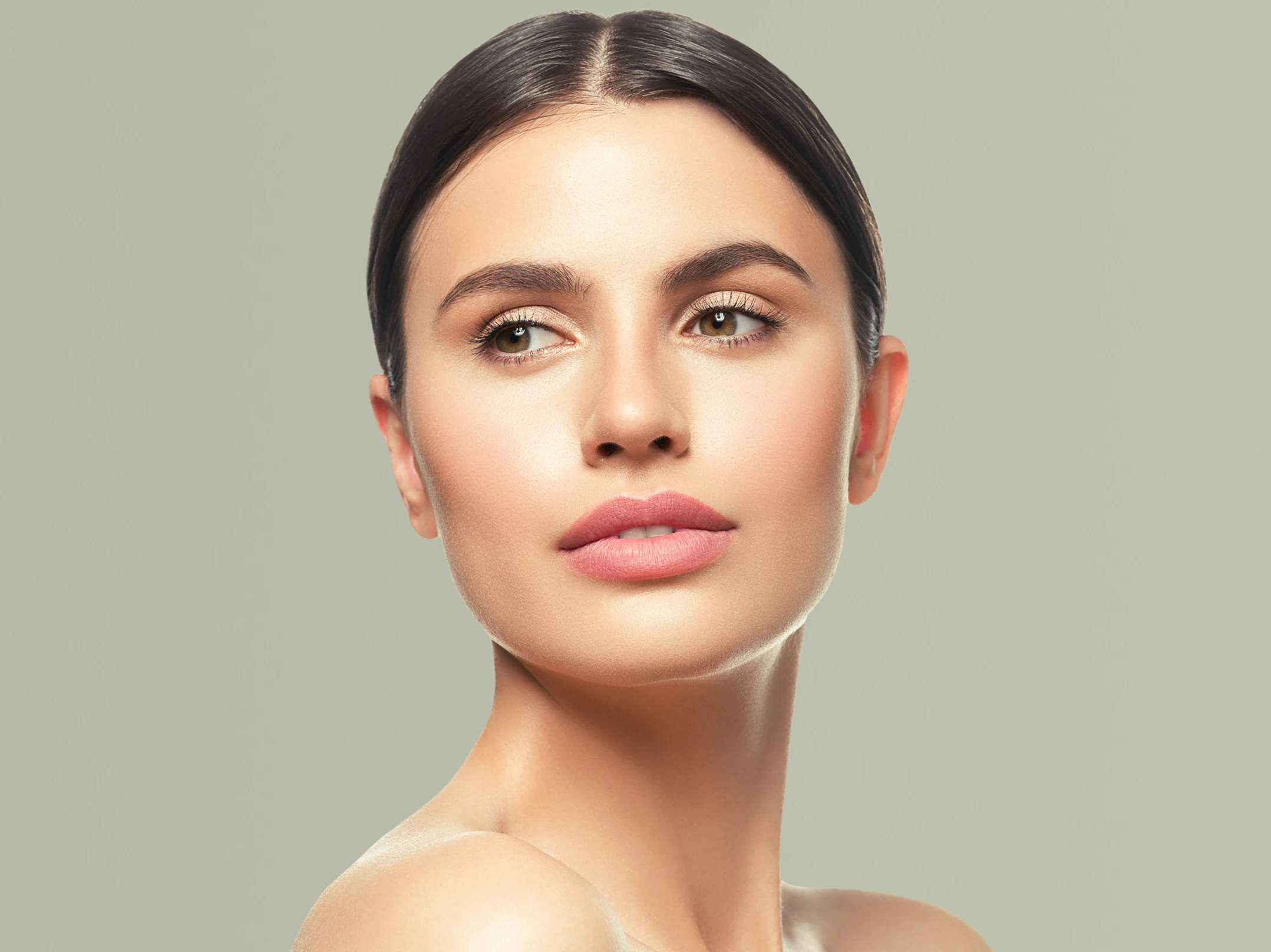Rosacea is a chronic skin condition that affects over 16 million Americans. It presents as persistent redness and fixed bumps that can cause stinging, swollen, and sensitive skin. There are 4 subcategories of it.
Erythematotelangiectactic is associated with facial redness, flushing, and visible blood vessels. The redness and irritation of this subtype is centered in the mid-face and is the most common type of rosacea.
Papulopustular rosacea is distinguished by red papules where the tops of the bumps are rounded. This type of papule can be differentiated from acne because acne bumps typically have a pointed top. This subtype of rosacea is most common in middle-aged women.
Phymatous rosacea presents with fibrosis and thickening of the skin. It is most commonly found in men.
Ocular rosacea is redness along the lid margin. In this subtype, your eyes might become dry and gritty.
Unfortunately, there is no definitive cure for rosacea, but there are some treatments to help control and improve the appearance of this condition. There is also no definitive cause, as this condition is hard to pinpoint. There is an association with genetics as we have seen rosacea run through families, but triggers for rosacea can be different for everyone. It could be sun exposure, emotional stress, hot weather, exercise, and/or diet.
How can you find and avoid your triggers? Keep a daily journal to track activities, food consumption, exercise, sun exposure, and more to help find what makes your rosacea flare-up. Look within your dietary consumption. Warm foods can bring heat to your face and initiate a flare. Other dietary items to look out for are alcohol, spicy foods, and citrus fruits.
We also stress the importance of sun protection daily, every day of the year! We recommend a physical sunscreen since chemical sunscreens can cause additional irritation to the skin. It is important to reapply your sunscreen throughout the day, and wearing a wide-brimmed hat whenever possible while in direct sunlight.
There are many other treatments/lifestyle changes to try to help control your rosacea.
Gut Health- We suggest improving your gut microflora by incorporating prebiotics and probiotics. Prebiotics stimulate the growth of good gut flora, and probiotics are live microorganisms that colonize the gut and restore healthy flora.
Choose skincare products carefully- Simplicity is key in your skincare routine. We suggest using a creamy, non-foaming cleanser, washing with lukewarm water, and patting gently to dry. Incorporate a moisturizer with hydrating ingredients such as ceramides and niacinamide. We advise avoiding harsh toners, chemical sunscreens, cleansing brushes, fragrance, and double-cleansing.
Prescription treatments- Prescriptions can be prescribed to target the inflammation that is carried by the organism.
Supplements- No specific data concludes that dietary supplements can help with it. There is limited data showing that omega-3 fatty acids can improve ocular rosacea. Zinc could also help improve inflammation.
Since rosacea presents differently depending on the person, it is important to find what triggers your rosacea. Treatment and triggers vary and can take a bit of trial and error before finding a solution that controls the appearance of your rosacea. Most importantly, we stress the incorporation of sunscreen your daily routine!





